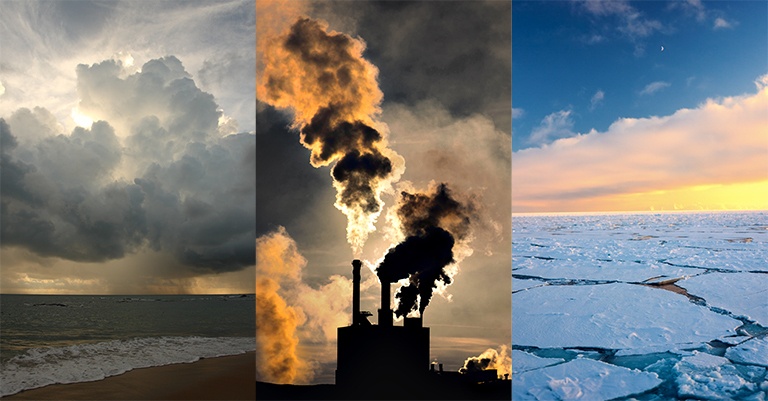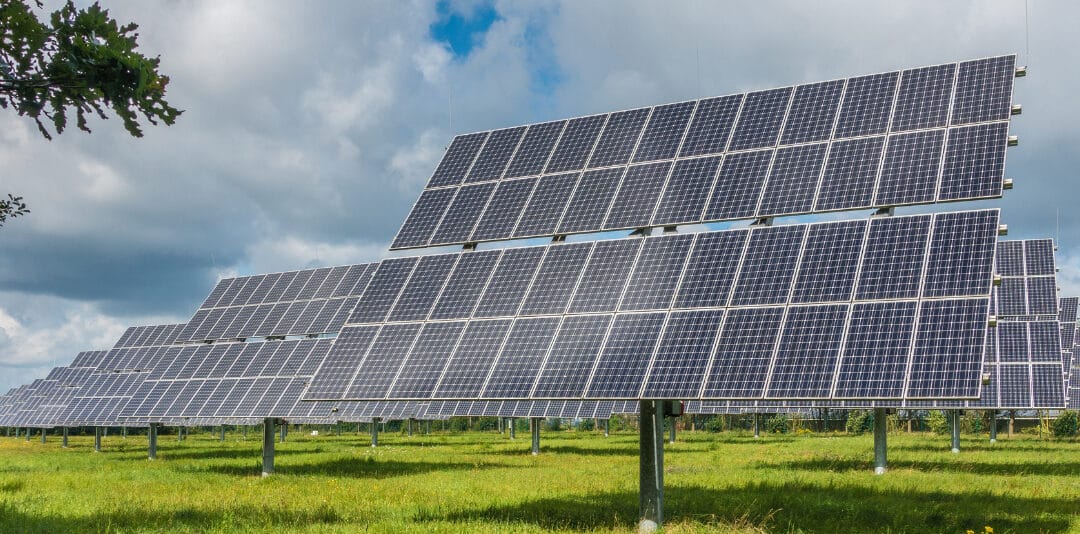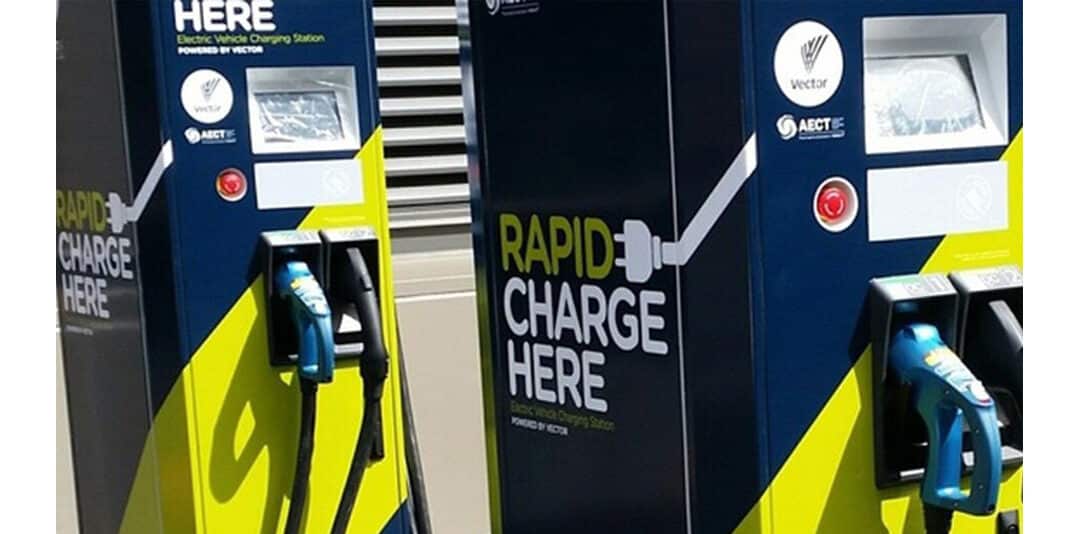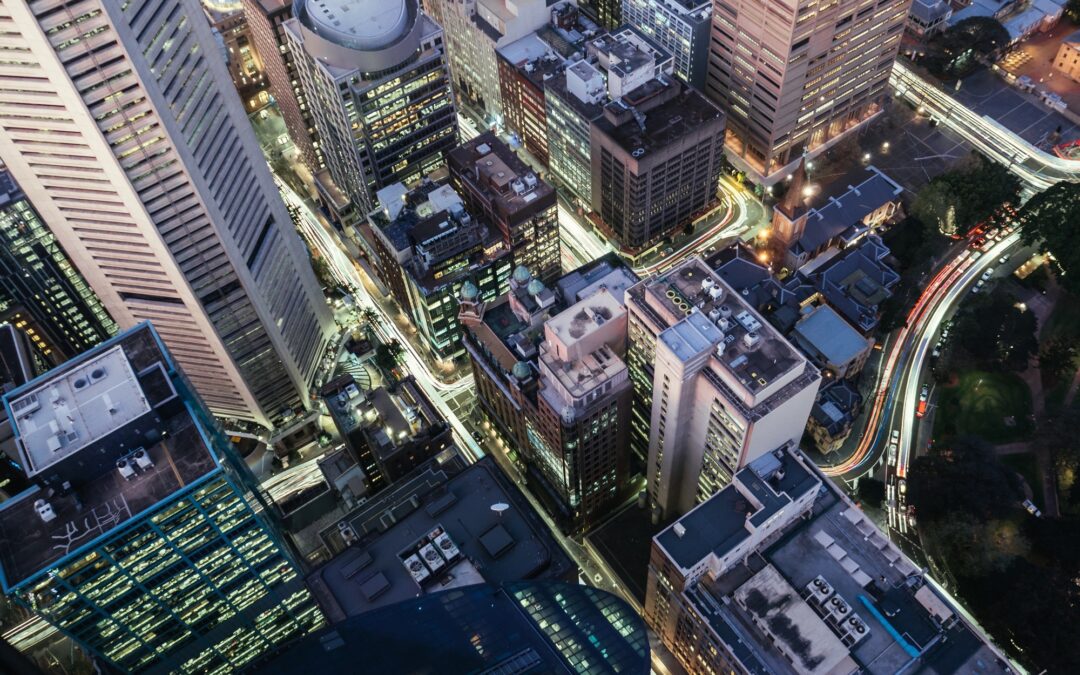
by RichardGardiner | Aug 4, 2018 | Energy
Until now, articles on the Total Utilities website have always been of direct relevance to the utility markets where we have operated since 1999.
In this case, we have included Jonathan Eriksen’s latest quarterly investment commentary below because it puts in wider New Zealand and global context the macroeconomic trading conditions that impact directly and indirectly on the utility providers in New Zealand.
I have an economics background and have known Jonathan since I emigrated to New Zealand 25 years ago. He is one of the leading actuaries in the country and his independent investment advice track record is second to none in my opinion.
The relevance of this advice to future trading conditions in the local ‘energy’ sector is very clear cut. Global energy market trading conditions are becoming more difficult due to well-publicised political factors including but not limited to the ebbs and flows of the Donald Trump Presidency. The New Zealand dollar exchange is weakening versus the major currencies overseas. We have a small, remote niche economy which has nonetheless been consistently successful over the past 20 years.
Focusing on the Liquid Petroleum Gas (LPG) side of ‘energy’, we have an energy source which is non-renewable but which is far ‘cleaner’ than other non-renewables like coal and diesel. Global demand for LPG is growing. There is a great opportunity for LPG to replace coal and diesel locally during the coming 30 year period. However the Government’s recent ill-advised (in my view) prohibition on all new offshore oil and gas exploration will inevitably constrain future local LPG supplies and hence force us to import more. This in turn will increase the proportion of imported LPG (particularly in winter) and hence increase our exposure to LPG price hikes driven by global political and economic forces in general and the Saudi Aramco Index in particular.
Investment Returns
The NZ Consumer Price Index rose to 1.5% for the one year to 30 June 2018. This was mainly driven by housing, construction, and food price increases. Inflation over the past ten years fell slightly to 1.6% p.a.
A number of funds within the Aon Master Trust were added over the quarter, raising FUM by $45 million. Total Master Trust FUM increased by $280 million over the quarter. Funds with a higher proportion of growth style assets (eg shares and property) had the best investment returns for the year to 30 June 2018.
The one year weighted average return for all Master Trust Growth funds was 10.6%; Balanced funds 8.1%; and Conservative funds 5.0%. Single Sector Aggressive funds returned 12.0% over the past year on a weighted average basis, while Defensive funds returned 1.8%.
Economic Commentary
The Trump administration demands to end all imports of Iranian oil have put pressure on prices as some key buyers, namely India, South Korea and Turkey look to source oil from elsewhere. The effects of the restricted supply pool are evident with oil prices still rising. However, it is unlikely that major importers will be able to switch suppliers entirely – at least by the proposed deadline of November.
Here in New Zealand, we are seeing our dollar depreciate. International trade uncertainty is one catalyst of this. During times of uncertainty, demand for riskier assets diminishes and the Kiwi dollar is viewed as a relatively ‘risky’ currency compared to many larger economies with more liquidity in their currency market from more transactions. This month, Reserve Bank Governor Adrian Orr released a statement that the OCR would remain unchanged at 1.75%. Also given acceptable inflation and employment levels, we can expect growth-supportive monetary policy for some time.
The effects of oil prices, petrol taxes and a weaker currency will flow through to domestic prices. CPI inflation is expected to rise to meet the target midpoint of 2%. However, escalating trade tensions between the US and China are beginning to give investors cause for concern as they could lead to even higher inflation disrupting the global economy. Energy market players are looking at rate hikes by the US Federal Reserve to quell this inflationary pressure. The ripple effect will eventually hit us, resulting in the RBNZ raising the OCR.
The expectation of higher short-term interest rates is supported by the US 10-2 yield spread curve which is at its lowest point since the 2008 recession. Bond investors are becoming increasingly more comfortable accepting lower yields for longer-term bonds. Historically, significant troughs in the yield spread have been followed by an economic slowdown. This was the case in both 2001 and 2007 (although it is not always the case).

The past does not always offer accurate predictions of the future, but there is some evidence in support of less optimistic economic forecasts going forward. The changes in investor sentiment and outlook over this calendar year are particularly relevant.
Last year the world enjoyed synchronised growth, low inflation and stable low interest rates which supported economic expansion. Oil prices below $60 a barrel was considered sustainable and reasonable.
This year the price of Brent Crude has reached $75 a barrel, interest rates in the US are projected to continue to rise steadily and inflation is starting to rise. This is worsened by the beginning of trade wars which can only increase consumers costs. They also raise geopolitical tensions and may derail global trade.
In this current climate of low interest rates and weaker currency in Australia and New Zealand, overseas buyers have pushed up share prices. Our equity market offers attractive dividend yields at relatively lower price to earnings ratios. In other words, you get more bang for your buck. The inflow of foreign capital will help companies grow while people are buying. Conversely, it would be potentially harmful to equity markets should they sell their positions. However domestic inflows from the SGC (compulsory Super in Australia) and KiwiSaver are also supporting local markets.
KiwiSaver
Over the past few years funds with a higher proportion of shares and property have seen some stellar returns. This has led to a number of investors who are invested in the more conservatively invested funds to ask: why their returns are so much poorer in comparison; and whether they should switch to a more aggressive style fund to begin reaping these same rewards. Our response is this: hindsight is a wonderful thing! We suggest to investors who have invested more prudently over the past few years to avoid a switch to growth options now. There would be nothing worse than jumping into a fund with a riskier asset allocation profile, after years of investing cautiously, to find that the markets take a dive just as they make the switch. After 30 years of falling interest rates and almost a decade of rising stock markets a correction will certainly happen. The only question is whether it’s this year or next?

by RichardGardiner | Jul 24, 2018 | Energy
This excellent article in Energy News says it all for me. A reality check which deserves to be published in the mass media!
Unlike New Zealand politicians who are only interested in scientific research that validates their particular view of the world, this acclaimed Cambridge University academic knows what he is talking about and has no ideological axe to grind on Climate Change.
– Richard Gardiner, Managing Director, Total Utilities.
The following article was originally written by Gavin Evans and published on Energy News
Michael Kelly has nothing against walkways and cycle paths. Public transport also has a lot of benefits, but none are great options for New Zealand to be looking at as emission reduction measures, the UK-based technologist says.
There may be a lot of arguments for building a rail line from central Auckland to the city’s airport but it won’t do anything material for emissions, he told regulators and industry executives in Wellington last week.
New Plymouth-born Kelly, Emeritus Prince Philip Professor of Technology at the University of Cambridge, is frustrated by the absence of intellectual rigour in the responses being proposed to climate change.
The world does not have unlimited resources to throw at the problem and — as an engineer — he wants to see initiatives and options developed that deliver the biggest “bang for the buck.”
What he sees instead – here and overseas – are wish lists.
“There is so much of what I regard as a lack of engineering integrity in the debate, which really actually makes me angry and sad.”
Real action on climate change
Kelly wants to see action taken against climate change – but he believes the cost, the time-scales involved, and the uncertainty of some of the science – favours more of a focus on adaptation than mitigation.
For New Zealand the Productivity Commission’s focus on afforestation of marginal farm land is compelling and should be the main focus of further studies, he says.
The next priorities should be on research and development to reduce methane emissions from stock, and ways to increase exports of processed wood, thus extending the duration of emissions captured in timber.
But many of the other recommendations of the commission, and most of those of the Royal Society of New Zealand in 2016, are “futile gestures” he says. They are either too costly, unworkable, or – in the case of increasing renewables in power generation or reducing domestic coal use – already happening without much intervention.
Promoting walking, cycling and use of public transport are all positive for other reasons, but the emission reductions are small and only make sense in very dense cities. Kelly estimates the cost of the carbon saved here from such measures at more than $500 a tonne.

Auckland – Photo by Bernard Spragg
Kelly notes that in densely packed Tokyo, 90 per cent of all journeys are by public transport. In New York that figure is down to 55 per cent; in Los Angeles – 10 per cent.
“Which of those is Auckland most close to?”
Urban sprawl similarly reduces the convenience of walking and cycling for much of the community.
“As soon as you have a very large city, walking and cycling becomes a minority interest,” he told the seminar hosted by Spindletop Law in Wellington.
“I don’t mind putting cycleways and anything in for other reasons – but if you say you are doing it to reduce carbon emissions then you are just burning money.”
Social change
Kelly’s fourth recommendation for New Zealand – surprisingly – is a “serious national programme” to change community attitudes to profligate consumption.
Climate change, he says, is being driven by massive population growth and urbanisation in developing countries.
Anything New Zealand does is almost irrelevant at a global scale. He likens it to digging a hole with a spade and having people with wheelbarrows fill it in behind you.
But Kelly says individual choices do matter and social mores can be changed at relatively little cost.
He cites the change in attitudes to drink-driving, smoking in public spaces and unprotected sex since he left these shores for the UK in 1971.
“What we have got to do is get the idea that profligate use of resources is deeply anti-social.”
He’s not talking about banning cars, although greater aerodynamic design would greatly improve their efficiency.
But what if community attitudes changed so that people jeered at Lamborghinis and their owners instead of leering at them?
“We wouldn’t, as we do in Cambridge now for six weeks every winter, have this huge ice rink with huge pumps, making sure the ice stays frozen so we can go skating in Cambridge over Christmas.
“We wouldn’t do that sort of thing if we had an attitude that using energy for profligate use was anti-social. That is probably the biggest single thing we could do.”
People central to climate change
And at its root, the climate change problem is people – the growing world population and what it takes to lift those in developing countries out of poverty. Trying to do that without increasing emissions brings you head to head with the declining energy return that investment in renewables delivers – relative to energy-dense options like hydrocarbons and nuclear.
The day after Kelly’s presentation, the International Energy Agency reported on progress on the UN’s Sustainable Development Goal 7 – universal access to reliable, affordable, sustainable, modern energy by 2030.
While electrification rates in Africa – where 600 million live without power – overtook population growth for the first time last year, progress on all four of the UN’s targets are lagging.
At current rates, 8 per cent of the world’s population still won’t have power in 2030 – an improvement from 13 per cent in 2016. Lack of access to power, LPG and natural gas means that in 2030, 27 per cent of the world’s population still won’t have access to clean cooking – compared with 41 per cent in 2016.
And renewables – including ‘traditional’ use of biomass – will only account for about 21 per cent of final energy consumption in 2030, up from 17.5 per cent in 2015. Less than 10 per cent of demand that year was met by ‘modern’ renewables.
“Progress has been challenging, particularly in developing countries where energy consumption continues to grow rapidly, and modernising economies substitute fossil fuels for traditional uses of biomass,” the IEA said.
“Despite major investment, it has been hard for renewable energy expansion to keep pace with growth in energy demand.”

It’s a conundrum and at a scale few recognise, Kelly says.
China, where 600 million people have gained power or shifted to towns and cities in the past 15 years, already accounts for a quarter of the world’s emissions.
The belt and road project – a highway and high-speed rail link to be built between Beijing and Vienna during the next 20 years – will lift about two billion people along its route out of poverty, Kelly says.
The project, also involving development of 700 coal-fired power stations, will treble China’s emissions by 2050. By that stage emissions from China and its broader interests will be 500-times New Zealand’s current emissions.
Kelly struggles with what he calls New Zealand’s “gung-ho” determination to take local action on climate change when “it isn’t going to make a blind bit of difference.”
If “precious New Zealand dollars” are to be spent, they would be more effective funding a programme to get people in China to raise their central heating thermostats by 2 degrees during summer.
“What you would save there would dwarf anything that you do here.”
China may be leading the world’s investment in wind and solar, but its use of coal will fall only slightly during coming decades.
And that just reflects the scale of energy demand growth and the relatively low energy return from some renewables.
Global energy demand increased by about 40 per cent during the past 20 years and could increase by the same percentage in the next two decades, Kelly says, citing BP projections. And while renewables and gas are expected to show the greatest growth, by 2035 coal would still be the world’s third-largest source of energy after oil and gas.
Kelly says New Zealand – and Norway – are rare in that they each have low density populations and a lot of hydro – a renewable that delivers a relatively high energy return on the cost required. New Zealand also has geothermal.
Most countries don’t have those options. And the wind and solar that is being developed around the world has a far lower energy return on the energy used to build them – compared with more energy dense hydrocarbon options, nuclear or large-scale hydro.
It’s an issue recognised by others. Last month, HSBC specifically included coal-fired generation development in Bangladesh, Vietnam and Indonesia among its permitted coal-related investments. To do otherwise would be to ignore the real energy needs of those communities, it said.

Archival photo of Meremere coal-fired power station, New Zealand – Photo by W. Cleal
Kelly says people tend to look at the scale of China’s investment in renewables as some sort of “beacon of hope” without also recognising its on-going investment in coal, gas and nuclear.
“So this idea that somehow around the corner we are going to be having a new age of renewable energy is just simply nonsense.”
“Renewables do not come close to constituting a solution to the climate change problem for an industrialised world.”
Kelly observes that about 40 per cent of the world’s emissions still come from the smoke stacks of coal-fired power generation. Currently that CO2 can be extracted at a cost of about USD $60 a tonne to USD $90 a tonne. By 2025 those figures could be down to USD $25 to USD $40.
Promoting other options costing five to 10-times those figures is simply “burning money,” he says.
But all these initiatives also come at a cost to energy productivity and Kelly is concerned people haven’t thought about the long-term consequences of that.
Energy determines quality of life and intervention should only be pursued in the clearest of cases, he says.
And the energy system accounts for about 9 per cent of the global economy.
CO2 extraction reduces the efficiency of coal-fired plants by almost a fifth – taking their performance back to 1960 levels.
But the impact of lower-returning renewables could be more stark.
Productivity decline?
Kelly cites studies of Spain’s investment programme in solar in the 2009-2012. Even assuming free panels, the projects over their lifetime will deliver only five-times the energy that was used to build and operate them.
That’s in contrast to the 10-times return from a coal-fired plant, or 15-times for a gas-fired plant in the UK.
Kelly says there is an established correlation between a community’s energy productivity and the health, education and cultural benefits it can provide.
“The world is running on 11-1. We don’t notice this at the moment, but once solar energy becomes a large fraction of the total energy mix this is going to show up as a lack of productivity and nobody seems to discuss that.”
Another factor that may temper the take-up of renewables is the expectation that more than half the world’s population could be living in dense megacities by 2050.
In those communities, rooftop solar can’t deliver enough energy for all those dwelling in high-rises. Land surrounding cities like Beijing, Hong Kong, Singapore, Moscow, Rio de Janiero, London and Calcutta may also be too valuable for agriculture to give it up for solar arrays and wind turbines.
Kelly is optimistic new food technologies – like aeroponics – will ensure that the world’s megacities are self-sufficient for at least basic food stuffs.
They are also where the world should put its focus for emissions reduction, but he’s not sure renewables can play a big part in that.
He believes nuclear energy and fossil fuels will remain the mainstay for them. Carbon capture and storage may be an option, but it does reduce generation efficiency, its development is slow and it remains unproven at scale.
Given the impacts of climate change have not been as severe as some predictions during the past 20 years, Kelly says his “greatest hope” for the megacities, and the globe generally, lies in a demographic change underway for the past 40 years.

Everywhere where there is universal primary education and more people live in towns and cities the local population is in decline – where the average number of children per family falls below 2.1.
Kelly notes that in Italy the rate is down to 1.2 and in Germany 1.4. In Botswana and southern India the rates are nearing 2.2.
The UN is picking the world population to reach nine billion by 2050. But the rate of growth is slowing and in some models the range of potential outcomes includes a decline soon after.
“The chance is that in 2150 the population will be seven billion and going down – that is the answer.
“The change in the world demographic now is going in our favour,” Kelly says. “It’s a matter of getting through the next 30, 40, 50 or 60 years.”

by chris | Jun 12, 2018 | Energy
It is well known that in New Zealand, energy generation is largely renewable. Around 65% of generation is hydro-based mainly in the South Island and around 15% is geothermal based through the central to the eastern side of the North Island. In the following series of articles, we will look at the pros and cons of commercial solar installations in the New Zealand market.
During the last National-led Government, there was little emphasis placed on increasing the uptake of large-scale Solar (with the current Labour-led Government this may change) as it was seen merely as converting from one form of mostly renewable generation to another with little overall benefit to New Zealand’s energy generation emissions. This is because the vast bulk of our thermal based load is only utilised during times of long-term dry weather (mostly during Winter periods) or intermittently when other generators are out for short-term planned or unplanned maintenance.
While Solar energy generation has been around for well over 30 years, it has only recently that economies of scale in efficiency and cost have meant that generating energy for photovoltaic panels is a realistic option for some businesses to reduce their reliance on the main transmission and local distribution grids.
A recent study published by Statistics NZ and the Ministry for the Environment concluded that sunshine hours are increasing in most areas across the country. However, there are areas throughout the country that have a more natural fit for installing Solar due to a combination of sunshine hours and the costs of energy and transmission and distribution energy pricing.
 The recently announced ban on offshore oil drilling and gas exploration will have a major impact on the energy requirements of the country. From the generation perspective, Genesis’ Huntly power station will be most affected. While the original Rankine units are expected to be operated through to around December 2022, the newer 400MW combined cycle generator may have an uncertain future. From an end user perspective, food manufacturing will be most greatly impacted by a lack of gas supply or higher costs due to imports which is most likely lead to manufacturing moving offshore or higher prices for consumers. However, I digress, although the above will most likely have a positive impact on the feasibility of distributed generation.
The recently announced ban on offshore oil drilling and gas exploration will have a major impact on the energy requirements of the country. From the generation perspective, Genesis’ Huntly power station will be most affected. While the original Rankine units are expected to be operated through to around December 2022, the newer 400MW combined cycle generator may have an uncertain future. From an end user perspective, food manufacturing will be most greatly impacted by a lack of gas supply or higher costs due to imports which is most likely lead to manufacturing moving offshore or higher prices for consumers. However, I digress, although the above will most likely have a positive impact on the feasibility of distributed generation.
Regulatory change and reform have always had a large impact on New Zealand’s primary sectors, and since deregulation of the energy system in 1999, successive governments have used the market for political capital by consistently tinkering and influencing the market. With the upcoming wide-ranging government inquiry into power pricing in New Zealand, the newly created Climate Change Commission and the Transmission Pricing Methodology Proposal one thing is for certain is the constant potential for change.

by DavidSpratt | Jun 12, 2018 | Energy
In this fourth and final article evaluating whether electric vehicles are a fad or the future, I conclude they are indeed the future.
I can feel the cold chill of the climate change deniers and petrol heads breathing down my collar as I write.
I love a grunty V8 as much as the next Kiwi. But the words, “Show me the money”, aren’t restricted to a Tom Cruise movie.
Yes, there are issues around the distance range, price and style options of electric vehicles (EVs). Yes, you will require a three-phase electricity supply if you want to charge your EV in less than eight hours. Yes, we may even see the need in the long term for changes to the way we generate and distribute energy nationally.
Yet, despite these reservations, any EMA member looking at replacing their vehicles any time soon would be well advised to run the numbers before succumbing to the team’s demands for yet more heavy metal.
The reality about EVs compared to petrol/diesel vehicles is as follows.
Electric vehicles are cheaper to run
I asked Graham Galliers, a utility analyst at Total Utilities Management Group, to review the fuel costs for my trusty V6 Commodore and compare them to an electric car equivalent.
When he sent me the calculation table (below), I checked the numbers over and over. Surely, he had been smoking the wacky baccy? But no. Sober, sensible Graham had not fallen into the arms of a patchouli-scented, hippy femme fatale and joined the ranks of the planet savers. The numbers added up.

Even allowing for the assumptions we made around fuel tax, distance range and electricity charges, the economic case behind EVs makes sense today and will progressively improve in the years ahead.
The cost comparison for a business use vehicle travelling 15,000 to 60,000 km a year is compelling – based on a price of $2 per litre for petrol, and taking into account an equivalent amount (66.5 cents per litre) for Government fuel taxes, levies and duties.
Beyond 60,000km, the numbers get even better, but you do run into range issues that could make a hybrid option more practical than a fully EV option, in the short to medium term.
Electric vehicles are, of course, way more expensive to buy than the equivalent petrol vehicle. The associated financial calculations require more time and space than I have here. In each case, a lot will depend on the resale value at the end of the term.
I expect electric car prices to fall rapidly as production rises and competitive pressure sets in. At the same time, I expect the residuals for petrol and diesel cars to fall, along with their declining popularity.
NZ relies on fuel imports to drive our economy.
Yet we are the Saudi Arabia of the Pacific when it comes to renewables like hydro, wind and geothermal energy. Our entire balance of payments deficit would evaporate if we switched to our existing renewables for our vehicles.
Oil is the fuel of last century
Petrol-powered vehicles will be as relevant to this century as horse and buggies were to last century: 24 million horses in the US when the first Model T Ford rolled into production
in 1908, reduced to three million by 1960.
China will produce seven million EVs by 2025. Europe, the world’s second largest car producer, will not be far behind.
See you at the charging station.
Read more electric car analysis in the New Zealand/Australia context, or take a look at these electric car reviews.

by DavidSpratt | May 9, 2018 | Energy
In this Part III examining whether electric vehicles (EVs) are a fad or really are the future, we consider the implications for the supply of electricity and more.
What happens when New Zealand stops importing oil and substitutes it with hydro, geothermal, solar and wind energy to make our cars and trucks work?
To start with, New Zealand would move from a current account deficit to a budget surplus. That’s good news all round. Save money on oil, save the planet, sleep easy at night.
Except…

There are 3.9 million registered cars and trucks in New Zealand. They consume $11.8 billion worth of fuel each year and employ tens of thousands of workers selling, servicing and repairing these vehicles.
Electric vehicles on the other hand number just over 24,000. They require much less service and support and the margins for new car sales are so low that most dealers won’t want to be involved with them.
So, the move to EVs will place a whole lot of jobs at risk while at the same time requiring a whole new set of skills that may or may not be available in the market.
Oil companies, in the meantime, won’t be just sitting around the campfire singing love songs while awaiting the new dawn. Don’t expect too many electric car chargers at your local petrol station. Do expect the price of petrol to fall though.
Electricity supply
Just how our electricity network will cope, is a key question. Concerned at the vision of transformers exploding, fuses blowing and power cuts making candlelit dinners a less-than romantic interlude, I went to the oracle: Andrew Toop, GM Commercial at Counties Power. I hoped he might ease my fears.
He said it’s not as bad as people might think.
Andrew said, “Our country’s generation capability is already very substantial and the recent investments by Transpower in new transmission infrastructure gives us a great platform to work off.
“Also, efficiency gains from better housing, lighting and insulation choices mean national demand
for electricity isn’t growing all that quickly in many regions outside Auckland.
“So EVs could make a lot of sense, subject to us paying attention to the basics, like smart local networks, suitable transformers and ensuring the wiring we put in place in our new and existing buildings is up to spec.”
Let’s pay attention to some of that underpinning technology.
Taking care of the basics
New Zealand is a world leader in “ripple switching”, the system lines companies (energy distributors) use to switch hot water heaters on and off when electricity demand peaks around dinner time. This same approach could well be used to balance the load generated by cars being charged when people get home from work.
There is also a mechanism called “Time of Use Billing”. Commonly used in commercial settings, we are also likely to see smart retailers automating the management of householders’ electricity usage to ensure that peak loads are managed and that users are getting the cheapest price all the time.
Let’s not forget the EV itself. Onboard artificial intelligence already supports safe driverless cars (well, almost). The same smarts could be used to ensure the car charges itself when the price is low, and the power is most available.
Speaking of peak demand. You may be surprised to know that our current electricity system only hits peak load a few times each year, in fact, only 0.6 percent of the time. For the remaining 99.4 percent of the time, the system is working well within its capacity. Adding to that, I believe that the Government is subsidising the Australian owners of Tiwai Point to consume nearly 15 percent of our total electricity production, so it appears there is a fair bit of potential headroom to support the emergence of electric cars. New Zealand is, after all, the Saudi Arabia of the wind and hydro world. Why not take advantage of all that cheap, renewable power?
Read more electric car analysis in the New Zealand/Australia context, or take a look at these electric car reviews.

by chris | May 9, 2018 | Energy
Many businesses begin collecting energy data as a means of saving energy – and energy costs. While this remains one of the greatest benefits of energy data analysis, its appeal does not start nor end with direct financial considerations.
In fact, focusing only on energy savings has led to an underestimation of the full value of data-backed energy management in global economies.
Across all sectors – from manufacturing to retail to healthcare – organisations are harnessing the operational efficiency benefits that result from energy data like never before by:
- Assembling and integrating energy data to share across the enterprise
- Combining data and advanced analytics
- Benchmarking against historical data, similar devices, comparable locations, and industry standards
- Acting on alerts and insights to ensure the reliability and performance of critical assets
Using energy data for operations and maintenance results in a wide range of benefits across the enterprise. Organisations are harnessing the operational efficiency benefits that result from energy data like never before.
Transparent collaboration
Businesses, today, generate more data than ever before, yet often, very little is actually used to make real-time decisions. Different departments gather their own data and do not always share it across the organisation.
Collecting data from critical devices formulates a single source of truth that can be easily shared across teams, departments, and entire enterprises. This breaks down information silos and enables managers to set KPIs and predict and avoid waste.
Increased production yields
Both discreet and processed manufacturers rely on the optimal performance of their production machinery energy as a lifeblood. Manufacturers think profit per hour and total profit should be driving factors in making decisions.
By monitoring the energy data of their machinery, manufacturers can now link their operational goals with energy performance. Ensuring equipment optimisation and effectiveness with live equipment status monitoring helps create greater outputs and enables users to calculate the cost of production per equipment/production line.
Improved maintenance schedules and expedited decision making
Initiating a systematic approach to energy data gathering at the device level, manufacturers can be alerted to anomalies in their critical devices. By diagnosing, troubleshooting, and servicing the machinery that is showing irregular consumption patterns, they prevent imminent disruptions or even breakdowns.
From kitchen equipment to HVAC, lighting and industrial machinery – maintenance schedules are improved and become more cost-effective.
When time is money, a quicker decision is a more profitable decision. Enterprise-level decisions that are based on data are reliable and undeniable.
Energy data enables the transformation of facility and maintenance groups from a cost centre to a value centre. No longer do these groups weigh on the company’s bottom line. Instead, they become the suppliers of data that adds value by informing decision-makers of opportunities for savings and optimisations.
Energy forms a sizable share of operating costs
Operational efficiencies from energy data
The starting point for most operational-improvement efforts is incremental change: taking an existing process as a baseline and seeing what improvements are possible from that point.
Saving energy, funnelling the savings to the bottom line, and reducing carbon emissions are all worthy benefits of energy data. Adding the multiple benefits to operations, albeit sometimes difficult to measure or quantify, increases ROI. Operational efficiencies maintain the value of the business while reducing the required resources.


















